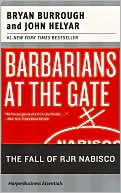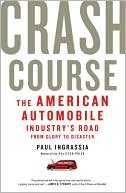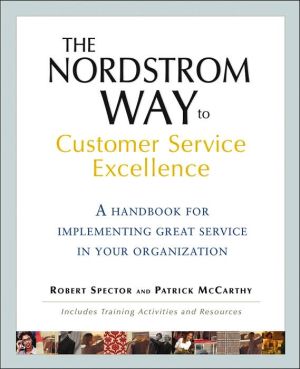Wal-Mart: The Face of Twenty-First-Century Capitalism
An indispensable introduction to the company that will define the twenty-first century economy.\ \ Edited by one of the nation's preeminent labor historians, this book marks an ambitious effort to dissect the full extent of Wal-Mart's business operations, its social effects, and its role in the U.S. and world economy. Wal-Mart is based on a spring 2004 conference of leading historians, business analysts, sociologists, and labor leaders that immediately attracted the attention of the national...
Search in google:
An indispensable introduction to the company that will define the twenty-first century economy.Edited by one of the nation's preeminent labor historians, this book marks an ambitious effort to dissect the full extent of Wal-Mart's business operations, its social effects, and its role in the U.S. and world economy. Wal-Mart is based on a spring 2004 conference of leading historians, business analysts, sociologists, and labor leaders that immediately attracted the attention of the national media, drawing profiles in the New York Times, Los Angeles Times, and the New York Review of Books. Their contributions are adapted here for a general audience.At the end of the nineteenth century the Pennsylvania Railroad declared itself "the standard of the world." In more recent years, IBM and then Microsoft seemed the template for a new, global information economy. But at the dawn of the twenty-first century, Wal-Mart has overtaken all rivals as the world-transforming economic institution of our time.Presented in an accessible format and extensively illustrated with charts and graphs, Wal-Mart examines such topics as the giant retailer's managerial culture, revolutionary use of technological innovation, and controversial pay and promotional practices to provide the most complete guide yet available to America's largest company. Publishers Weekly Culled from an April 2004 conference on Wal-Mart at the University of California, Santa Barbara, these essays can be redundant, but they offer stimulating perspectives on the world's largest corporation. The rise of Wal-Mart, declares editor Lichtenstein (Walter Reuther), has been abetted by a "southernized, deunionized, post-New Deal America," a business culture in which labor costs can be squeezed, even as a company promotes loyalty via "faux classlessness." Several chapters place these phenomena in context: describing how Wal-Mart represents both an extension of and a quantum leap from previous retail giants and how it places unprecedented price pressure on its suppliers. Wal-Mart saves consumers money, the contributors argue, but only by externalizing many social and economic costs, including benefits for its workers. One provocative chapter, based on anonymous worker sources, describes a workplace atmosphere of relentless stress and understaffing. Some interesting tidbits: Wal-Mart hit a wall trying to expand in Mexico and never gained traction in Germany, in both cases because of the countries' different socioeconomic structures. A final chapter, by a union organizer, proposes a "Wal-Mart Workers Association" for this infamously antiunion company. The association would gain 13,000 members if only 1% of the Wal-Mart workforce joined. (Jan.) Copyright 2005 Reed Business Information.
Preface1Wal-Mart : a template for twenty-first-century capitalism32Woolworth to Wal-Mart : mass merchandising and the changing culture of consumption313It came from Bentonville : the agrarian origins of Wal-Mart culture574Growth through knowledge : Wal-Mart, high technology, and the ever less visible hand of the manager835Making global markets : Wal-Mart and its suppliers1076The Wal-Mart effect and the new face of capitalism : labor market and community impacts of the megaretailer1437Wal-Mart and the logistic revolution1638Wal-Mart in Mexico : the limits of growth1899Making the new shop floor : Wal-Mart, labor control, and the history of the postwar discount retail industry in America21310Patriarchy at the checkout counter : the Dukes v. Wal-Mart stores, Inc., class action suit23111How to squeeze more out of a penny24312A Wal-Mart workers association? : an organizing plan261
\ Publishers WeeklyCulled from an April 2004 conference on Wal-Mart at the University of California, Santa Barbara, these essays can be redundant, but they offer stimulating perspectives on the world's largest corporation. The rise of Wal-Mart, declares editor Lichtenstein (Walter Reuther), has been abetted by a "southernized, deunionized, post-New Deal America," a business culture in which labor costs can be squeezed, even as a company promotes loyalty via "faux classlessness." Several chapters place these phenomena in context: describing how Wal-Mart represents both an extension of and a quantum leap from previous retail giants and how it places unprecedented price pressure on its suppliers. Wal-Mart saves consumers money, the contributors argue, but only by externalizing many social and economic costs, including benefits for its workers. One provocative chapter, based on anonymous worker sources, describes a workplace atmosphere of relentless stress and understaffing. Some interesting tidbits: Wal-Mart hit a wall trying to expand in Mexico and never gained traction in Germany, in both cases because of the countries' different socioeconomic structures. A final chapter, by a union organizer, proposes a "Wal-Mart Workers Association" for this infamously antiunion company. The association would gain 13,000 members if only 1% of the Wal-Mart workforce joined. (Jan.) Copyright 2005 Reed Business Information.\ \ \ \ \ Library JournalTypically, books about Wal-Mart either blindly praise the budget behemoth or else denounce it for its race-to-the-bottom labor practices, among other things. This book does neither. Rather, editor Lichtenstein (history, Univ. of California, Santa Barbara) has collected papers from a conference of the same name that was held at the Center for Work, Labor and Democracy at the University of California, Santa Barbara, in 2004. The book's 12 selections are divided into three categories: "History, Culture, Capitalism," "A Global Corporation," and "Working at Wal-Mart." Authors include social and labor historians, economists, anthropologists, union leaders, and management specialists. Overall, the papers are scholarly in nature and include charts, graphs, tables, and footnotes. Yet they are also accessible and interesting and provide insight into what is now the world's largest company. While not a book for leisure readers looking to learn new management secrets, it provides views of the many sectors that Wal-Mart now occupies in our lives and our (increasingly global) economy. Highly recommended for academic libraries.-Susan Hurst, Miami Univ. Libs., Oxford, OH Copyright 2005 Reed Business Information.\ \








